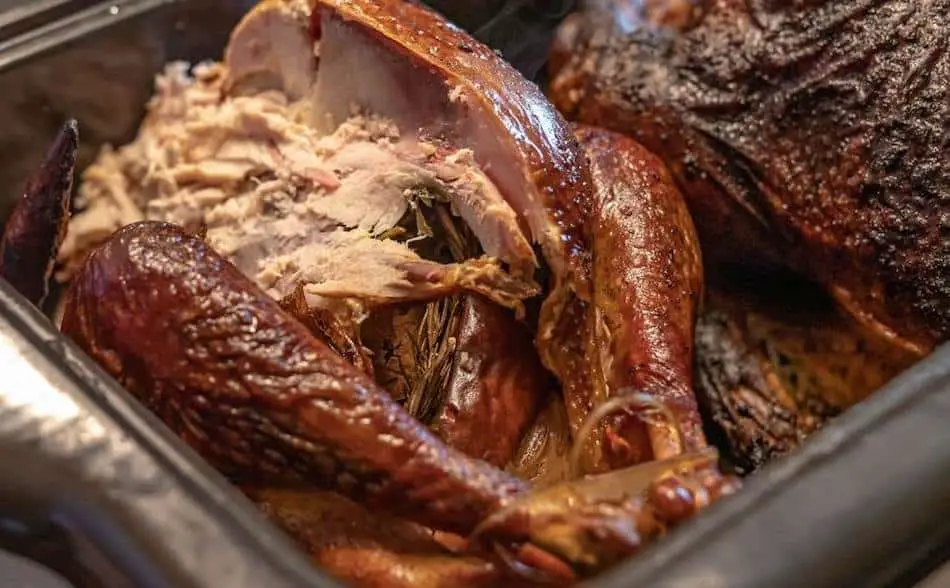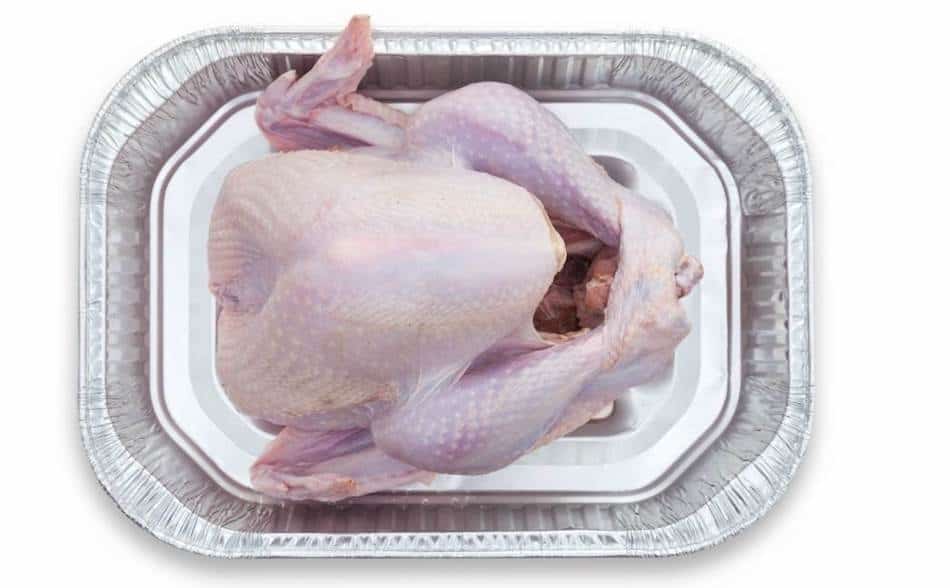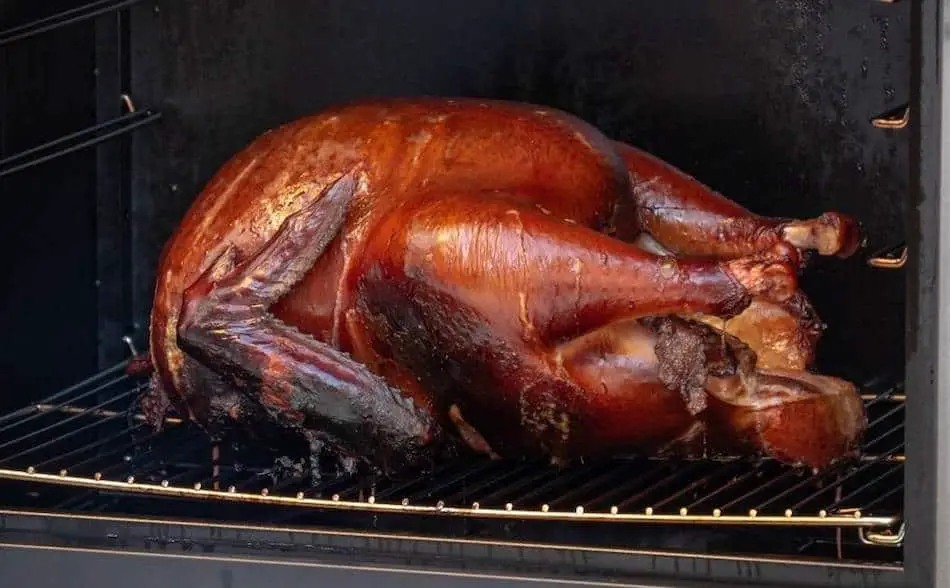
Cooking a smoked turkey can be a bit of a challenge because it’s easy for the meat to turn out tough and dry. If you’re planning to smoke a turkey, you might be wondering how to avoid this common problem. There are several factors that can contribute to a dry turkey. In this article, we’ll go over some tips and tricks to help you achieve the perfect smoked turkey – moist, juicy, and full of flavor.
To avoid a dry turkey, there are some things you can try, like cooking the turkey at a high temperature for a shorter amount of time, spatchcocking the turkey (removing the backbone and laying it flat), brining the turkey (soaking it in a saltwater solution), letting the turkey rest after cooking, buying a fresh turkey, and cutting the turkey into pieces. However, there are a few reasons why smoked turkey can turn out tough or dry, but the most common is if the bird is cooked at a high temperature for too long. High heat can draw out the moisture in the turkey, making it tough and dry. Turkey is a type of white meat, which means it’s low in moisture, fat, and collagen. These characteristics can contribute to the turkey drying out when cooked.
Key Points
- One of the biggest challenges of smoking turkey is that it can turn out tough and dry.
- Smoking the perfect turkey requires a careful balance because there are many factors that can go wrong.
- Some common practices to avoid include cooking the turkey at a high temperature for too long, buying a large turkey, and cooking the turkey low-and-slow like other cuts of meat.
- Some ways to avoid a dry turkey include buying a smaller turkey, spatchcocking the turkey, brining the turkey, letting the turkey rest after cooking, buying a fresh turkey, and cutting the turkey into pieces.
- Cooking turkey at a high temperature for a shorter amount of time, around three hours at 275°F to 300°F, is the optimal method.
- Other cuts of meat with a high fat and collagen content, like brisket, are better suited for low-and-slow cooking because the fat and collagen melt into the meat and make it moist and juicy.
- Brining the turkey in a saltwater solution can help retain moisture, but it may also make the skin soft and rubbery. To avoid this, make sure to dry the turkey uncovered in the refrigerator and increase the cooking temperature.
- Basting the turkey with a mixture of butter and oil can help keep the meat moist, and using a meat thermometer can ensure the turkey is cooked to the proper internal temperature.
- Covering the turkey with foil or a tent of foil and paper towels can help prevent the skin from drying out, and allowing the turkey to rest after cooking can also help retain moisture.
Useful Smoked Turkey Tips
| Factor | Effect on Turkey |
|---|---|
| Cooking at a high temperature for too long | Turkey becomes tough and dry |
| Buying a large turkey | Turkey is harder to cook evenly, outer parts may be overdone |
| Cooking low-and-slow like other cuts of meat | Skin becomes soft and rubbery |
| Buying a smaller turkey | Easier to cook evenly, less risk of outer parts being overdone |
| Spatchcocking the turkey | Turkey cooks faster, more evenly, retains moisture |
| Brining the turkey | Turkey is more flavourful, less likely to dry out during cooking |
| Letting the turkey rest after cooking | Helps retain moisture |
| Buying a fresh turkey | Less likely to be dry |
| Cutting the turkey into pieces | Allows for more even cooking, easier to get seasoning into all parts |
| Cooking at a high temperature for a shorter amount of time (3 hours at 275°F-300°F) | Optimal method for cooking turkey |
| Brining the turkey (may cause soft, rubbery skin) | Helps retain moisture, but drying the turkey uncovered in the refrigerator and increasing cooking temperature can prevent soft skin |
| Basting the turkey with butter and oil | Helps keep meat moist, but softens the skin |
| Using a meat thermometer | Ensures turkey is cooked to the proper internal temperature |
| Covering the turkey with foil or a foil and paper towel tent | Prevents skin from drying out, but softens skin |
| Tenting the turkey | Prevents turkey from going black |
Why Turkey Is A Challenge
Turkey is a challenge, because if you cook it at a low temperature, the skin will turn out rubbery. If you go too high, then it will be tough. Turkey is best cooked at a higher temperature but for a shorter amount of time, rather than a low-and-slow cook as you would for other cuts of meat. The optimal cooking time and temperature for turkey is three hours between 275°F and 300°F.
When meat such as turkey is cooked, it goes through a series of chemical changes. Meat contains a large percentage of water, and when cooked, meat loses its water content.
Other cuts of meat with a large amount of collagen turn out tough and chewy when cooked too fast. However, when these cuts are cooked low-and-slow, the collagen melts into gelatin. Turkey is a lean meat, therefore it has a low amount of collagen. The problem with turkey is that it can easily become dry. White meats have a tendency to dry out when cooked.
Most other cuts of meat used in low-and-slow cooking such as brisket has a high fat and collagen content. When cooked low-and-slow, this fat and collagen melts and renders into the meat.
Here are seven ways to avoid a tough, dry turkey.
Buy A Smaller Turkey
When buying a turkey, don’t get a huge 20-pound bird. The larger the turkey, the harder it’s going to be to cook evenly. Because the turkey is so large, by the time the inside of the bird is cooked, the outside will be overdone. I understand a huge turkey looks more impressive to your dinner guests, but a tough, dry turkey won’t win them over. It’s far better to spatchcock a turkey, cut it in pieces, or buy two small birds rather than one big bird.

Spatchcock The Turkey
Whole turkeys have thick and thin parts with a large, hollow cavity which makes cooking a challenge. The unevenness prevents the heat from reaching all parts of the bird and cooking evenly. The best way to counter this problem is by spatchcocking the turkey. A spatchcocked turkey will cook faster and will help retain moisture.
A spatchcocked turkey, or butterflying, is when the backbone is removed and the bird is lay flat on the grill. Butterflying the turkey will level the playing field and make all parts of the bird brown and cooked evenly. It will also make it easier to get the seasoning in and around every part of the bird. And if you’re worried about presentation, a butterflied turkey looks spectacular.
How To Spatchcock Turkey
It’s simple to spatchcock a turkey. Follow these steps:
- Lay the bird with the backbone facing upwards and the breast and wings facing downwards.
- Run a knife or kitchen shears along both sides of the backbone.
- Remove the backbone entirely.
- Clean the cavity by cutting out any unwanted parts.
- Flip the turkey so its breast side up.
- With two hands, push down on the breastbone (between the wings) until you hear a crack.
Brining Turkey
Moisture is the key to cooking the perfect turkey, and brining is a good way to keep a turkey moist. Salt helps meat retain moisture, so by soaking the bird in a brine solution for 24 hours prior to cooking, the turkey will be more flavourful but it will be less likely to dry out during the cook. Most turkeys nowadays have already been injected with a salty brine solution, however making your own brine is simple.
If you want a crispy skin on your turkey, keep in mind that soaking a bird in a brine solution may cause the turkey to have skin soft, rubbery skin. To avoid this, make sure you dry the turkey uncovered in the refrigerator. Also, make sure you cook the turkey over 275°F, otherwise you will get soft skin. In case you don’t like wet brining, the other option is dry brining.
Dry Brining
Salt will not only help draw flavour from the bird, it will also help the meat keep its moisture during cooking. If you want to avoid soft, rubbery turkey skin, dry brine the bird 24 hours before cooking. This will allow the salt to penetrate the flesh and help the turkey retain moisture during the cook. Dry brining simply involves rubbing kosher salt into the entire bird.
How Long To Rest Turkey
Let the turkey to rest after cooking. This allows the meat juices to redistribute. If you carve the turkey too soon, all the meat juices will flow out of the meat. Resting allows the muscles to relax. While cooking, all the muscles tighten and push moisture out. When you rest the turkey, the muscles relax and reabsorb moisture.

Fresh Turkey vs Fresh Turkey
A fresh turkey is always better than a frozen bird. Try to buy a fresh turkey because it will retain more moisture than a frozen turkey. Frozen meat contains water crystals that damage the cells responsible for keeping moisture locked inside. So frozen meat contains less moisture.
Never thaw a turkey at room temperature. The best way to thaw a frozen turkey is to leave it in the fridge for a day or two. Allow more time for bigger birds. Never thaw meat at room temperature because this will increase the amount of fluid loss. If you must freeze your turkey, make sure it’s frozen at its freshest point.
Cut The Turkey Into Pieces
If you have a large turkey, cut it up into pieces rather than trying to smoke it whole. By cutting the bird into pieces, the meat should brown all over and cook more evenly. Turkey pieces will also be flavourful because the smoke will find it easier to reach all parts of the meat. However, you still need to go easy with turkey pieces, they can dry out just as easy as the whole bird if exposed to high heat for long enough.
More Turkey Tips
Monitor the temperature closely. Although you want to cook turkey at a high temperature to get a crispy skin, you don’t want to expose the bird to high heat for extended periods otherwise it will dry out.
Make sure you have good thermometers to keep a close check on the turkey. Use a duel-probe leave-in thermometer and an instant-read thermometer. For the turkey to be safe, it should be cooked to an internal temperature of 165°F. Check multiple areas of the bird with an instant-read thermometer. Start checking the internal temperature of the turkey at the 2-hour mark.
Turkey takes about 3-4 hours to smoke, depending on the size. However, as with most smoking meats, don’t cook to time, cook to internal temperature.
Related:
Why is My Smoked Turkey Rubbery?
Why is My Smoked Turkey Black?
The Complete Guide to Smoking Turkey
The Best Wood for Smoking Turkey
My Favorite Meat Smoking Tools
Thanks for checking out this article. I hope you learned a few things. Here are some of my favorite tools I use when smoking brisket that may be useful to you. These are affiliate links, so if you decide to purchase any of these products, I’ll earn a commission. But in all honesty, these are the tools I recommend to my family and friends who are just starting out.
Meat Thermometer: There are dozens of fancy thermometers on the market, but I still use my trusty TP20. For around $50, I have a high-quality meat thermometer with two probes, and can track the temperature of my smoker with one probe, and my meat with the other probe. The ThermoPro TP20 is an Amazon Best Seller because it’s the easiest thermometer to operate, is durable, highly accurate, and comes with pre-programmed meat settings.
Instant Read Thermometer: Arguably, the second most important tool you need is a fast and accurate instant-read thermometer. These tools play an important role in the latter stages of the cook when the meat needs regular checking in multiple areas. I use the ThermoPro TP19 because it can do everything a ThermaPen can do, but for a fraction of the cost. You can check out the TP19 on Amazon here.
Wireless Thermometer: The latest thermometers on the market have no wires and can be controlled by wi-fi via your phone. Airprobe 3 is the best of this technology.
Butcher Paper: Wrapping brisket in butcher paper has become a huge trend in barbeque thanks to Aaron Franklin. Wrapping your brisket in paper will give you a nice brisket bark. However, you can’t just use any old paper, it has to be unwaxed, food grade paper. You can find it on Amazon here.
Advanced Thermometer and Automatic Temperature Controller: Once you’re ready to take things seriously, the FireBoard 2 Drive is a six-channel Bluetooth/Wi-Fi thermometer that can monitor up to 6 pieces of meat, control and graph your cook sessions on your smartphone, and attaches to an an automatic blower that will convert your charcoal smoker to a set-and-forget. This is one of the most advanced meat thermometers on the market. You can check it out on the FireBoard website here.
